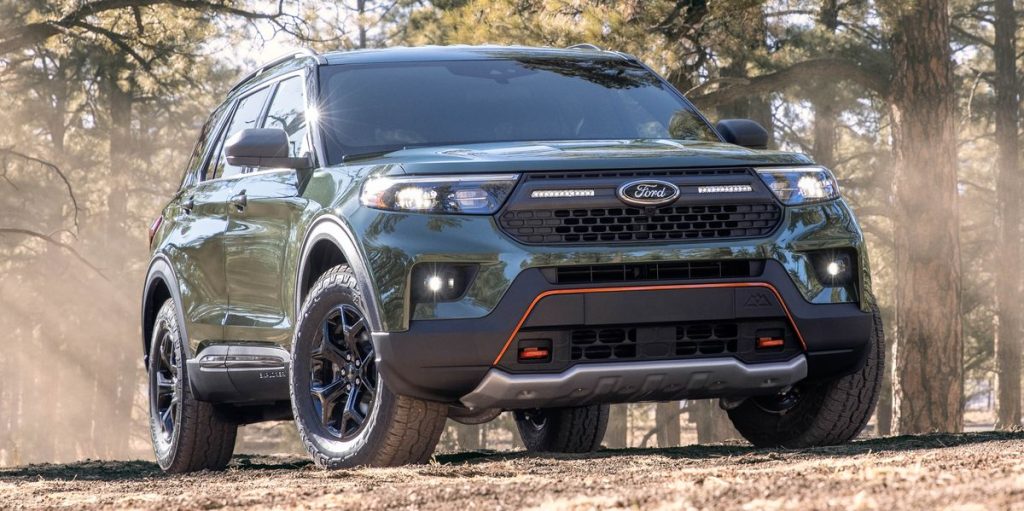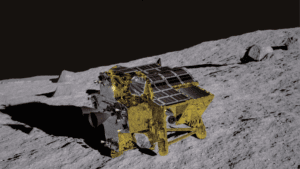2023 Ford Explorer

Overview
The Ford Explorer traces its roots all the way back to 1990, when the first generation entered the market for the 1991 model year and lit the SUV market on fire. The current Explorer is now in its fourth model year and offers buyers a roomy interior with a third row, athletic exterior styling, and three powertrain options. It’s a competent vehicle that’s more than capable of getting the job done, especially when the job is hauling a family and its gear, and there’s even a high-performance version—but it’s never been able to break-out from the massive pack of mid-size SUVs currently on the market. There are more premium and more refined offerings, including the Kia Telluride, the Hyundai Palisade, and the Jeep Grand Cherokee L. Ford has attempted to improve the Explorer’s competitiveness by rolling out spruced-up variants, like the off-road-oriented Explorer Timberline. Even so, we still think shoppers in this segment ought to at least research other options, of which there are many.
What’s New for 2023?
The Ford Explorer sees no changes in performance, capability or technology for the 2023 model year, though a new Red Jewel Metallic paint color option has been added to the mix.
Pricing and Which One to Buy
We think the mid-level Limited model is the best Explorer for the money. The smaller single-turbo four-cylinder engine doesn’t pack as much of a punch as the burlier twin-turbocharged V-6, but it gets the job done and does so more efficiently than the bigger powerplant. It can tow a sizeable 5300 pounds when equipped with the towing package. We’d also add all-wheel drive for $2,000. Apart from that, we think the Limited trim’s desirable standard features should suffice. These include a 12-speaker Bang & Olufsen audio system, 20-inch wheels, a heated and power-adjustable steering wheel, leather upholstery, a power-folding third row, and upgraded driver assists such as adaptive cruise control. If you want more off-road capability, the slightly more expensive Timberline is a good choice; it’s powered by the same turbo-four.
Engine, Transmission, and Performance
Base, XLT, and Limited trims come with a 300-hp turbocharged 2.3-liter four-cylinder engine, and it motivates the Explorer with a reasonable amount of authority. A Timberline we tested with that engine hit 60-mph in 6.0 seconds. The lead-footed drivers among us will prefer the King Ranch, Platinum, or ST models, which are powered by a 400-hp twin-turbocharged 3.0-liter V-6. A hybrid joined the Explorer lineup back in 2020. It pairs a 3.3-liter V-6 engine with an electric motor for a combined output of 318 horsepower. A hybrid powertrain configuration is also available for Limited and Platinum models, and while it makes sense for people who can take advantage of its lofty EPA-rated city mpg, we found the standard turbocharged four-cylinder engine to be sufficiently potent and more efficient on the highway. The Explorer rides on a rear-wheel-drive platform, but all-wheel drive is still optional. A 10-speed automatic transmission is standard across the board. Ride and handling are agreeable and composed but far from entertaining; the Explorer ST is far more athletic, and its extra power and stiffer suspension make it a real performance SUV. When properly equipped, the Explorer can tow up to 5600 pounds.
Fuel Economy and Real-World MPG
The EPA has not yet released fuel economy ratings for the 2023 Explorer, but we expect these figures to remain the same as the 2022 model year since no changes have been made to the SUV that would affect its efficiency. Not surprisingly, the Explorer has varying EPA fuel-economy ratings due to its myriad powertrain and drivetrain combinations. The rear-drive hybrid model is rated as the thriftiest, with estimates of up to 27 mpg city and 29 mpg highway. Adding all-wheel drive reduces the hybrid’s ratings by three and four miles per, respectively. We tested one on our 75-mph highway route, where it managed only 24 mpg. The 400-hp Explorer ST earned 25 mpg in this same test, which beat its EPA rating by 1. We also put the four-cylinder Explorer with all-wheel drive to our highway fuel-economy test. The government estimates that version will earn 20 mpg city and 27 highway; we saw 28 mpg. For more information about the Explorer’s fuel economy, visit the EPA’s website.
Interior, Comfort, and Cargo
While the interior design may border on uninspired, the Explorer’s cabin is functional and comfortable—at least for those in the first two rows. Getting into the standard third row is fairly easy thanks to a mechanism that moves the second-row seat out of the way at the touch of a button. Once back there, however, older kids and adults will find that the seat is too close to the floor to be comfortable. Rivals such as the Chevrolet Traverse and Volkswagen Atlas provide more comfort in the third row. We managed to fit four carry-on suitcases behind the Ford’s third row, and we fit a total of 31 bags with both back rows folded flat.
The Car and Driver Difference
Infotainment and Connectivity
An 8.0-inch touchscreen infotainment is standard and includes Apple CarPlay and Android Auto capability and a Wi-Fi hotspot. The system is both attractive and responsive but not as intuitive as we’d like. A rotatory controller would help in that regard. To get the optional 10.1-inch vertically oriented screen, you’ll need to upgrade to one of the Explorer’s most expensive trims. Still, every model is available with voice-activated navigation as well as a rear-seat entertainment system. Apart from the base Explorer, a 12-speaker B&O stereo system comes standard.
How to Buy and Maintain a Car
Safety and Driver-Assistance Features
Ford outfits every Explorer with a host of standard driver-assistance technology and offers upgrades such as self-parking assist. For more information about the Explorer’s crash-test results, visit the National Highway Traffic Safety Administration (NHTSA) and Insurance Institute for Highway Safety (IIHS) websites. Key safety features include:
Standard forward-collision warning and automated emergency braking Standard blind-spot monitoring and rear-cross-traffic alert Standard lane-departure warning and lane-keeping assist
Warranty and Maintenance Coverage
Ford provides wholly average limited and powertrain warranties that align with most competitors’ plans. However, the company doesn’t provide the complimentary maintenance that Toyota and Chevy do.
Limited warranty covers three years or 36,000 miles Powertrain warranty covers five years or 60,000 miles No complimentary scheduled maintenance
Specifications
Specifications
2022 Ford Explorer Timberline
Vehicle Type: front-engine, all-wheel-drive, 7-passenger, 4-door wagon
PRICE
Base/As Tested: $48,040/$48,555
Options: Timberline off-road light kit, $515
ENGINE
turbocharged and intercooled DOHC 16-valve inline-4, aluminum block and head, direct fuel injection
Displacement: 138 in3, 2264 cm3
Power: 300 hp @ 5500 rpm
Torque: 310 lb-ft @ 3500 rpm
TRANSMISSION
10-speed automatic
CHASSIS
Suspension, F/R: struts/multilink
Brakes, F/R: 13.6-in vented disc/12.6-in disc
Tires: Bridgestone Dueler A/T Revo 3
P265/65R-18 112T M+S
DIMENSIONS
Wheelbase: 119.1 in
Length: 198.8 in
Width: 78.9 in
Height: 70.7 in
Passenger Volume: 156 ft3
Cargo Volume: 18 ft3
Curb Weight: 4565 lb
C/D TEST RESULTS
60 mph: 6.0 sec
1/4-Mile: 14.5 sec @ 95 mph
100 mph: 16.4 sec
Results above omit 1-ft rollout of 0.3 sec.
Rolling Start, 5–60 mph: 7.1 sec
Top Gear, 30–50 mph: 3.6 sec
Top Gear, 50–70 mph: 4.8 sec
Top Speed (gov ltd): 113 mph
Braking, 70–0 mph: 168 ft
Roadholding, 300-ft Skidpad: 0.81 g
C/D FUEL ECONOMY
Observed: 18 mpg
EPA FUEL ECONOMY
Combined/City/Highway: 21/19/22 mpg
–
C/D TESTING EXPLAINED
–
2020 Ford Explorer ST
VEHICLE TYPE
front-engine, all-wheel-drive, 6-passenger, 4-door hatchback
PRICE AS TESTED
$62,020 (base price: $55,835)
ENGINE TYPE
twin-turbocharged and intercooled DOHC 24-valve V-6, iron-and-aluminum block and aluminum heads, direct fuel injection
Displacement
180 in3, 2956 cm3
Power
400 hp @ 5500 rpm
Torque
415 lb-ft @ 3500 rpm
TRANSMISSION
10-speed automatic with manual shifting mode
CHASSIS
Suspension (F/R): multilink/multilink
Brakes (F/R): 14.3-in vented disc/13.8-in vented disc
Tires: Michelin Latitude Sport 3, 275/45R-21 107Y
DIMENSIONS
Wheelbase: 119.1 in
Length: 199.3 in
Width: 78.9 in
Height: 70.2 in
Passenger volume: 149 ft3
Cargo volume: 18 ft3
Curb weight: 4853 lb
C/D TEST RESULTS
60 mph: 5.2 sec
100 mph: 13.3 sec
Rolling start, 5–60 mph: 5.9 sec
Top gear, 30–50 mph: 3.2 sec
Top gear, 50–70 mph: 3.8 sec
¼-mile: 13.8 sec @ 101 mph
Top speed (govenor limited): 146 mph
Braking, 70–0 mph: 161 ft
Roadholding, 300-ft-dia skidpad*: 0.86 g
*stability-control-inhibited
C/D FUEL ECONOMY
Observed: 21 mpg
EPA FUEL ECONOMY
Combined/city/highway: 20/18/24 mpg
More Features and Specs





